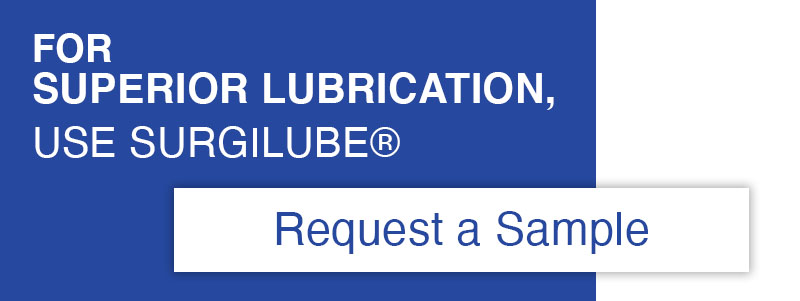The Art of Foley Catheter Insertion: Advice From a Seasoned Nurse

Whether you are pursuing your license as a paramedic, a nurse, physician’s assistant, or medical doctor, at some point you’ll find yourself staring at the skills checklist for foley catheter insertion. If you are like most people, they thought of inserting a large bore tube into a stranger’s bladder is anything other than appealing. Mostly because you will find yourself cringing just thinking about your own bladder being infiltrated. Don’t fret just yet, though! Although getting a Foley catheter is an invasive procedure in one of the most intimate areas on the human body, they are not nearly as uncomfortable as you might imagine and they tend to alleviate more discomfort than they cause. Don’t believe me? You can always practice on yourself!
All nurses find that one skill they are good at and it seems to follow them, it becomes their niche and all the other nurses who feel less confident in that particular skill will call on them for help from time to time. For me, that skill is the Foley catheter insertion. I am not sure why I am good at it, but I suspect it comes from the imagined discomfort I fear from receiving one myself, so I have honed the best techniques to help make my patient’s as comfortable as possible. Fortunately for my first few attempts, the patients were already under general anesthesia in the operating room, completely unconscious and unable to feel my unsteady hand or see the terror in my eyes as I attempted to thread a tube the size of my pinky into a hole smaller than a pencil eraser. But, as they say, practice makes confident and confident I am! To help ease your mind for this particular skills check-off, I will share a few tips of things I have learned along the way.
1. Pay attention in anatomy and physiology.
If you don’t completely understand how to navigate the anatomy you are working with, for the sake of everyone, please take a refresher before attempting any procedure! You may think you have a good understanding of the genitalia, but there is a very big difference between identifying external structures and locating the opening of the urethra. It is important to understand that anatomy can vary dramatically and the mannequins and textbooks use “normal, ideal” images and replicas. Your patients may be sick, old, young, obese, very young, or suffering from some abnormality. While the male anatomy tends to be a little more straightforward, this isn’t always the case — the first time you care for an elderly obese man suffering from epididymitis, you’ll understand what I mean. And, finding the urethral opening on a female can be a challenge for the novice excavator. It is important to pay attention to the differing anatomy and take every opportunity to do thorough exams so that you know what you are looking at, every time. Ask questions; after all, you only get to be a student in clinical rotation once.
2. Keep it sterile.
This is the thing I see the most medical professionals fumble on. When inserting a foley catheter, it is a sterile procedure performed on a sterile field. The risk of breaking this sterile field is introducing contaminants directly into the bladder of your patient. The sterile gloves and the surgical mask that are included in every foley catheter kit is for your patient’s protection; use them. Once you have swabbed the area with the supplied betadine, it is not okay to go poking around. Using a bacteriostatic lubricating jelly such as SurgiLube® helps keep things sterile too.
3. Manage smells.
Unfortunately, Foley catheter insertion is one of the procedures that tend to expose the medical professional to some pretty unsavory smells. It is definitely not okay to wear a look of disgust while performing your task on another person’s genitals. My advice is to manage the smells in advance. As mentioned in the last tip, there is always a surgical mask in the kit, it helps keep some smells from wafting into your mouth and nose and can also keep smells in. Every professional has their trick for creating pleasant smells behind the mask, find one that works for you and is authorized by your facility. Chewing spearmint gum can help, although most facilities strictly prohibit gum chewing — and with good reason, but that’s another topic. Apply mint rub below your nose or simply apply some fruity chapstick prior to entering the room.
4. Don’t forget the lube, and use it liberally!
There is nothing more uncomfortable than friction inside your urethra. Tubes are not meant to be inserted into such a tiny hole. In every foley catheter insertion kit, you will find a packet of lubricating jelly. This packet cannot be reused or any portion of it saved once opened (reference tip number two, regarding sterility), so don’t be conservative in your lubricant application. The slicker the hose, the easier it goes! The quality of the lubricant you use can make all the difference, which is why I recommend always keeping a pack of single-use SurgiLube® Surgical Lubricant packet with me. Its water-soluble properties keep it from getting tacky and help me keep things gliding nicely in every procedure I use it in (which is a lot!).
5. Keep a steady hand.
Confidence is key to any procedure. Keeping a steady hand is important to nailing the insertion on the first try and causing the least amount of discomfort to your patient. Use smooth, fluid motions to make the insertion as quick and comfortable as possible. Maintain positive control of the entire line of tubing at all times, and remember this may be tricky if you have used enough lubricating jelly.
6. Don’t let the urine fool you.
The first few times you place a Foley catheter, you’ll be so excited to see the urine fill the tube because that is the indicator that you have landed your placement correctly and the catheter is working! But, the task is not complete yet. Make sure to focus and continue to advance the catheter slightly so that when you inflate the balloon (and, please, do not forget to inflate the balloon!), it is inside the bladder and not the urethra. Once you have inflated the balloon, secured your line, and cleaned up the procedure mess, lower the foley bag lower than the patient and observe for continued urine flow. This is important, as you’ll need to make sure you have not caused a blockage somewhere or that a clot is not preventing the flow of urine. Failure to ensure that the line is flowing properly can result in urine retention and potentially a burst bladder. If you need to, double check that everything is working okay with a quick bladder scan.
Once your catheter is properly placed, it is back to business as usual. Take a deep breath and silently congratulate yourself on a job well done. Make sure you document your work on more than just your skills check-off sheet; after all, if it isn’t documented in the patient’s chart, it was not done! Don’t feel pressured to check off a skill sooner than you feel confident. Try, try again, and always take an opportunity when it presents itself!
For the best lubricating jelly for seasoned and novice medical professionals alike, trust SurgiLube® surgical lubricant.
